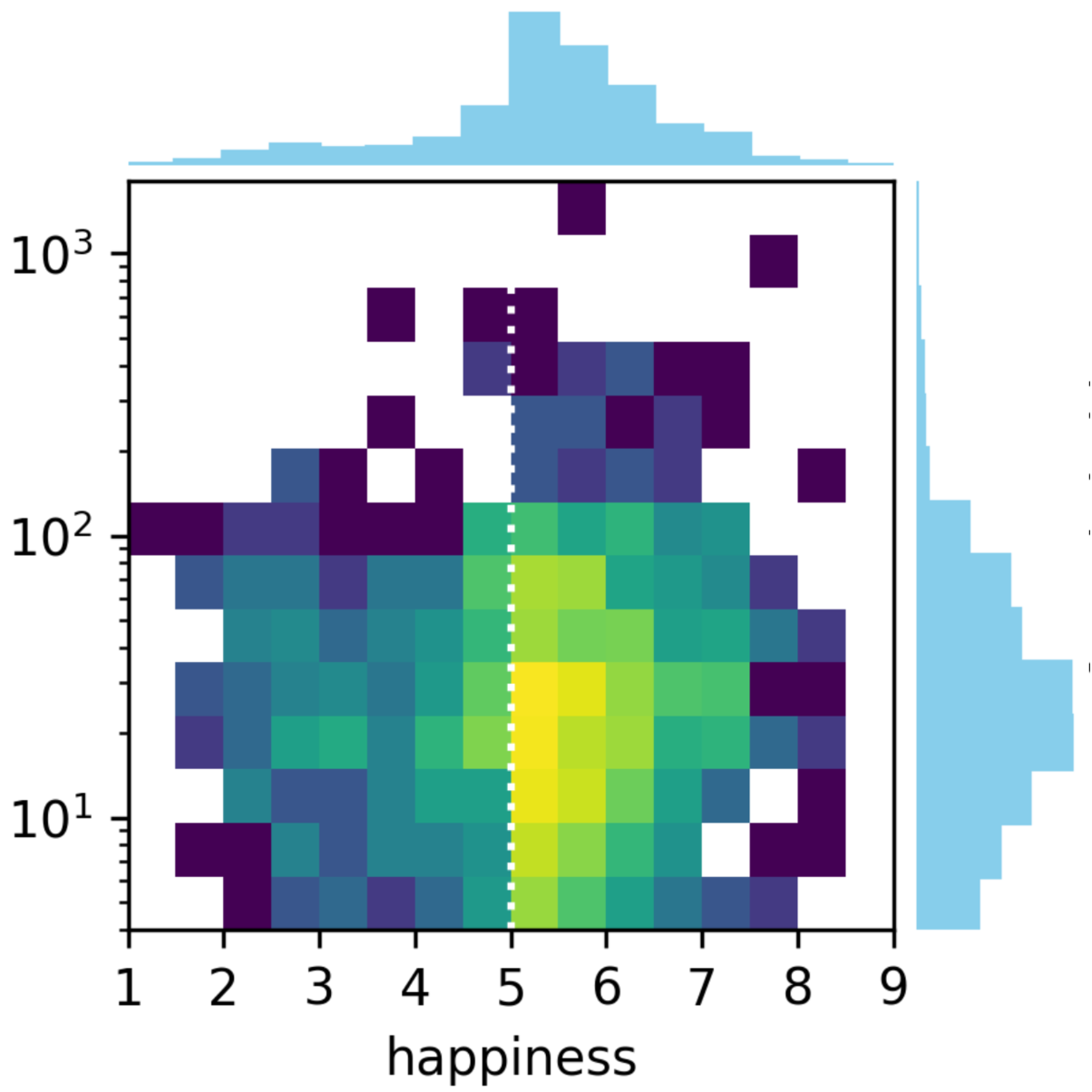Sentiment and structure in word co-occurrence networks on Twitter
M. I. Fudolig, T. Alshaabi, M. V. Arnold, C. M. Danforth, and P. S. Dodds

Times cited: 36
Abstract:
We explore the relationship between context and happiness scores in political tweets using word co-occurrence networks, where nodes in the network are the words, and the weight of an edge is the number of tweets in the corpus for which the two connected words co-occur. In particular, we consider tweets with hashtags \#imwithher and \#crookedhillary, both relating to Hillary Clinton's presidential bid in 2016. We then analyze the network properties in conjunction with the word scores by comparing with null models to separate the effects of the network structure and the score distribution. Neutral words are found to be dominant and most words, regardless of polarity, tend to co-occur with neutral words. We do not observe any score homophily among positive and negative words. However, when we perform network backboning, community detection results in word groupings with meaningful narratives, and the happiness scores of the words in each group correspond to its respective theme. Thus, although we observe no clear relationship between happiness scores and co-occurrence at the node or edge level, a community-centric approach can isolate themes of competing sentiments in a corpus.
- This is the default HTML.
- You can replace it with your own.
- Include your own code without the HTML, Head, or Body tags.
BibTeX:
@misc{fudolig2021a,
author = {Fudolig, Mikaela Irene and Alshaabi, Thayer and
Arnold, Michael V. and Danforth, Christopher M. and
Dodds, Peter Sheridan},
title = {Sentiment and structure in word co-occurrence
networks on {T}witter},
year = {2021},
key = {language},
note = {Available online at
\href{https://arxiv.org/abs/2110.00587}{https://arxiv.org/abs/2110.00587}},
}